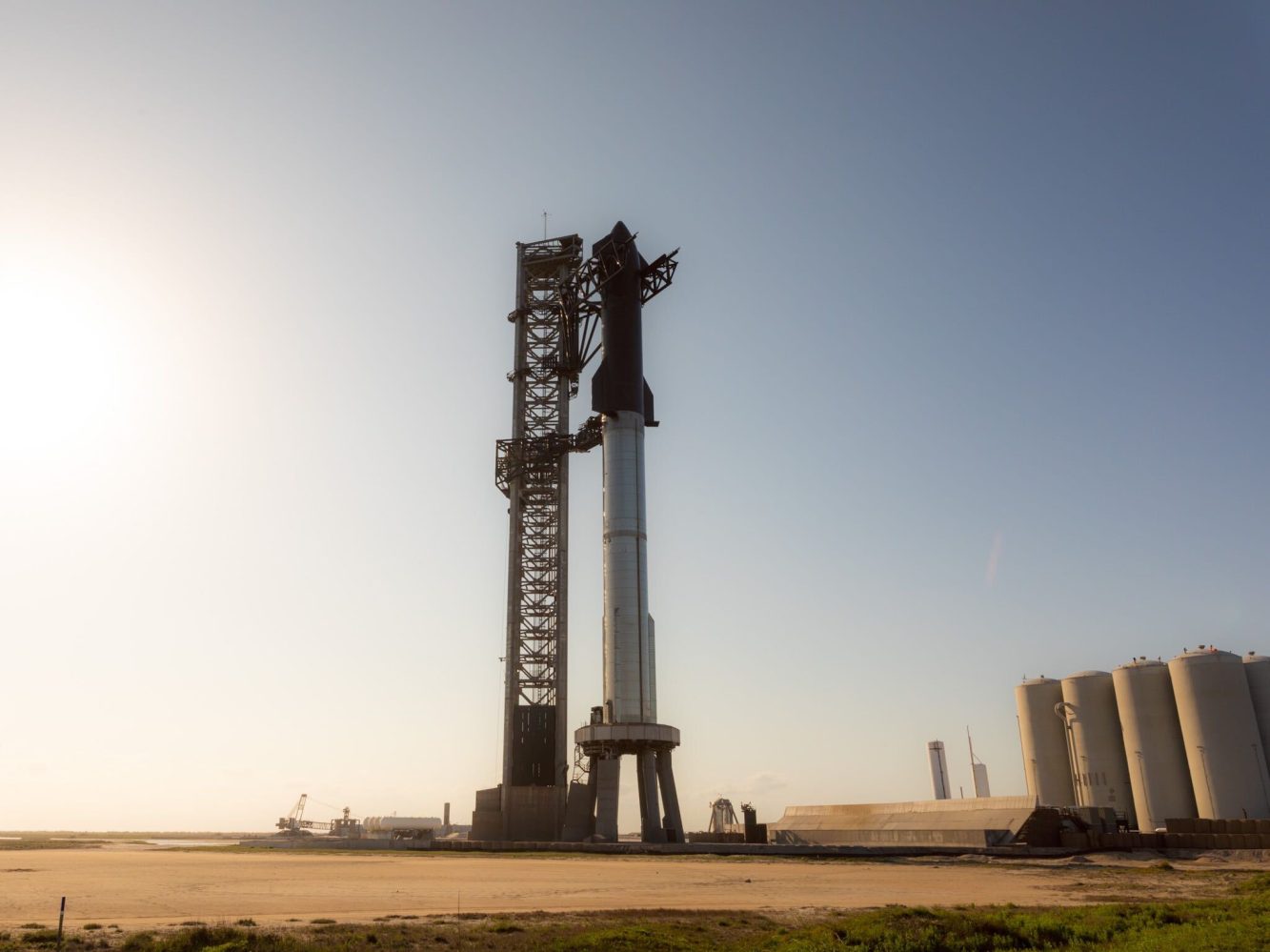
SpaceX is diligently working towards achieving another successful launch of its Starship rocket later this year. The previous launch resulted in damages that necessitated repairs to the orbital pad and even led to a lawsuit. Despite these setbacks, SpaceX is making progress towards its next launch campaign.
SpaceX installs new pad equipment for less damage
One of the most significant damages incurred during April’s inaugural fully integrated Starship launch was beneath the orbital launch mount. Unlike most modern launch pads equipped with flame diverters, Starship’s pad had only flat concrete and lacked an operational water deluge system. As a consequence, the flames and, more importantly, the sound waves from the booster’s Raptor engines caused severe damage to the concrete, resulting in a large crater underneath the launch mount.
At first, many were puzzled by SpaceX’s decision to launch without any flame diversion or subversion. However, the reason behind it was straightforward, they could either wait for weeks to finish installing the necessary equipment or proceed with the launch and address any issues that arose afterward. SpaceX chose the latter option, opting to launch promptly and fix any damages post-launch.
Nevertheless, the aftermath of Starship’s launch has now become the subject of a lawsuit concerning environmental concerns.
In response to the previous damages, SpaceX has been working diligently to install pad equipment to prevent a recurrence. A water deluge system has been largely installed and underwent testing earlier this week. This system serves to shield the pad from flames during the ignition and liftoff of rockets and is particularly crucial in dampening sound waves that could be lethal near the launching rocket.
Furthermore, more pad equipment is scheduled to be installed in the upcoming weeks to further reinforce the area below the launch pad, including the addition of a large steel plate.
Next pieces of flight hardware arrive at the pad
Recently, Booster 9 was transferred from the High Bay, where it was constructed, to the launch pad. The booster was then hoisted onto the orbital launch mount to commence testing in preparation for its upcoming launch.
While there have already been tests involving Starship Ship 25 on one of the sub-orbital launch stands, which had not been utilized for flight since Ship 15’s flight over two years ago, attention has now shifted to Booster 9, featuring 33 Raptors underneath. The process ahead involves pressure tests and eventually static fires, indicating that there is still a considerable journey ahead before the next launch attempt. However, with progress being made, a potential successful launch is within sight.
FTC: We use income earning auto affiliate links. More.




Comments